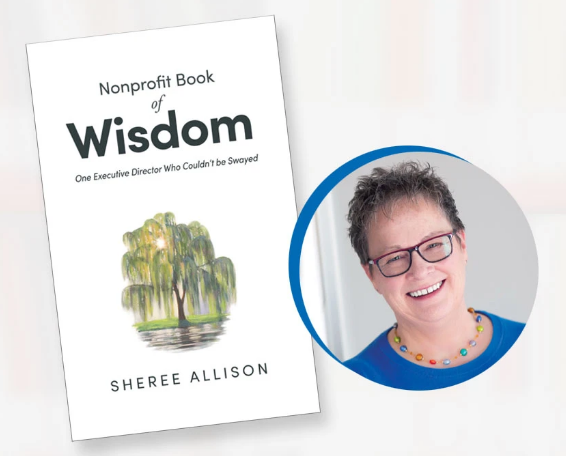- Home
- About Us
- The Team / Contact Us
- Books and Resources
- Privacy Policy
- Nonprofit Employer of Choice Award

 When you have an hour to cover the critical things with your Board Chair, you have to remember they landed in there like a parachute. They came from their world where there is both the personal side and the professional side. They aren't involved in the day- to- day business of the organization.
When you have an hour to cover the critical things with your Board Chair, you have to remember they landed in there like a parachute. They came from their world where there is both the personal side and the professional side. They aren't involved in the day- to- day business of the organization.
Upon my arrival at a meeting with the Board Chair, the first thing I did was recalibrate their brain as to what it is we do here. The easiest way is to share something significant that just happened. Something that turns the Mission on in their brain. It could be a recent win, a success story, anything where I can say ABC happened and this is what it did. I let that settle for a minute. The Mission falls to the back when you're dealing with governance things, board things, strategy things, and budget things. They're not exactly the kinds of things that make the Board Chair say, "Gee, I want to parachute in there and spend an hour of my day.” I knew I was bringing them all the same kinds of challenges that exist in whatever life they exited in order to meet with me. I'm mindful that being a Board Chair isn't easy.
At the same time, I was also aware that it doesn’t work to walk into a meeting with the Board Chair and unload all my problems. It's certainly human nature to want to do that, and here's how Executive Directors so easily fall into that trap. You have an Annual Meeting. You have a new Board. You get have a new Board Chair who has never served as Board Chair before. Let's call him Bill. After that annual meeting, Bill is given the gavel. It's up to the Executive Director to work with Bill so he knows what he's doing, and that he's doing things that are Board- related.
So the meetings go on between the Executive Director and Board Chair Bill for several months. They're meeting every two weeks for an hour. In month eight, there's a crisis burning inside the organization. The Executive Director is at the edge and overwhelmed...and it's time to meet with Bill on Board issues. The first thing to land on the table between them will predictably be the crisis that's burning. And that's where things start to unravel. It comes from the cycle of frequency of contact and trust. It becomes so easy to discuss issues that are not properly Board matters. Instead they are operational, and this is how the Board Chair gets their hands in it.
An Executive Director has to remember who they are in a meeting with the Board Chair. That's the daily vitamin, because frequency and confidence will blind you. It will cause you to go to the Board Chair to get things figured out. That's when it gets messy. And that's when you begin losing your authority.
This is a very delicate relationship. The Board Chair is a direct liaison between the Board and the Executive Director. They have to be informed, and they have to be thinking of the whole organization. Most of that information is provided to them by the Executive Director, and the two must work well together. Unfortunately, most of the time, the Board Chair doesn't know what their role is. Mostly they want to pick up the hammer and use it. Board Chairs tend to be solely the lead in whatever they do for a living. They are often the final decision- maker, so they're used to picking up the hammer and using it when they want to.
Inside your organization, the Board Chair is only “one of the members of an entire Board. As Executive Director, you are not the Board Chair’s employee; you report directly to the whole Board. To have a balanced, open, trusting relationship with the Board Chair, you must learn the dance early — right after the AGM. Until the next AGM, the Board Chair is the person with whom you will consult, debate, and co-create the team inside the Boardroom.
Frequency and focus are two critical steps in that dance. Not too often, and frequently enough to keep informed on the key issues. That’s how often you meet with the Board Chair. Bi-weekly is a good option. Keep the meetings focused on governance issues and the future. Ask questions. You will learn a lot from the Board Chair. Just stop talking. You have a lot to pour into them, and they have a whole different perspective that you can learn from and leverage for the good of the organization.
Always remember that no one likes surprises, especially the Board Chair. Your role is to keep the pipeline of information relevant, timely and succinct. Seek a spirit of trust and both of you will soon know the dance of when to lead and when to follow.
Thriving Point: As an Executive Director, you must understand your role, the role of the Board Chair, and the dance between the two of you.
Sheree Allison’s career as an executive director spans 30 years for Big Brothers Big Sisters and Boys & Girls Clubs of Miramichi, New Brunswick, Canada. As a Certified Fundraising Executive (CFRE), exceptional strategic fundraising has been the hallmark of Sheree’s career.
To order your copy of The Nonprofit Book of Wisdom, click here